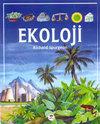回到热魔术玩具世界杯
Q3 Environmental Science
引用次数: 4
摘要
在土耳其,每年有数千吨菱镁矿经过热处理。该工艺年生产和选矿菱镁矿矿石达十亿吨。破碎过程是选矿厂的一个重要环节,生产出的菱镁矿是很薄的废粉,平均占原料矿石的25%。到目前为止,这类材料的数量,大约有50万吨的废料被储存起来。这种材料的80%小于165微米,平均晶粒尺寸d50为79微米。这种存量极难细料的材料对环境的危害是不可避免的。本研究的目的是,对大量生产的这么薄的废粉状材料,探讨回收的可能性,同时防止对环境造成危害。研究了利用细粒废菱镁矿粉制取高纯氧化镁的工艺。在实验研究中,采用浸出法。所得产物经过重复条件。化学分析是为了确定产品的化合物。根据化学分析结果,所得产物为Mg(OH)2:99.35%, SiO2:0.15%, CaO:0.50%。结果表明,该工艺可制得高纯度的Mg(OH)2。此外,为了确定产物的表征,对其进行了XRD分析。XRD分析结果表明,产物名为水镁石。本文章由计算机程序翻译,如有差异,请以英文原文为准。
Atık Manyezit Tozlarının Geri Kazanımı
Each year in Turkey, thousands of tons of magnesite ore is subjected to heat treatment. For this operation, billion of tons of magnesite ore is produced and beneficiation. Crushing process which is occur an important department of beneficiation plants, are produce as very thin waste powder magnesite which is average %25 of feed raw ore. So far, the amount of this type of material, approximately 500,000 tons of waste is known to be stocked. This material is 80% smaller than 165 microns, and average grain size d50 is 79 microns. This stock is very difficult to fine-sized material harm to the environment is inevitable. The purpose of this study, produced in large quantities so thin, the waste powder material, is investigate the possibilities of recovery, at the same time the material is to prevent harm to the environment.
In this study, high purity Mg(OH)2 production from fine waste magnesite powder was investigated. In experimental studies, the leaching method is used. The products obtained are repeated conditions. Chemical analysis is made to determine of the product compounds. According to the results of chemical analysis, the product compounds, Mg(OH)2:99.35%, SiO2:0.15%, CaO:0.50% is seen from obtained. These results show that high-purity Mg(OH)2 will be produced. In addition, the aimed to determine of the product characterization were made XRD analysis. According to XRD analysis results show that the product name is Brucite.
求助全文
通过发布文献求助,成功后即可免费获取论文全文。
去求助
来源期刊

Ekoloji
环境科学-生态学
CiteScore
1.10
自引率
0.00%
发文量
0
审稿时长
>12 weeks
期刊介绍:
Cessation. Ekoloji is an international journal that focuses on papers that report results from original research on all disciplines engaged in the field of environmental research. We welcome articles that cover the entire spectrum of environmental problems and environmental pollutants, whether chemical, biological or physical. Its coverage extends to all environmentally related issues: air and water pollution, solid waste, noise, recycling, natural resources, ecology and environmental protection. It includes articles on basic and applied environmental pollution research, including environmental engineering and environmental health. All types of pollution are covered, including atmospheric pollutants, detergents, fertilizers, industrial effluents, metals, mining wastes, oil, pesticides, plastics, radioactive materials and sewage. It also includes research papers on ecological and environmental issues such as climate change, biodiversity. The primary criteria for publication are scientific quality and ecological/environmental significance.
The journal will be read and contributed to by biologists, applied ecologists, environmental scientists, natural resource specialists, environmental engineers, environmental health specialists, agro-ecologists, veterinaries, agricultural engineers, landscape planners and designers. The journal welcomes full "research papers" and short "research notes", only in the English language.
 求助内容:
求助内容: 应助结果提醒方式:
应助结果提醒方式:


